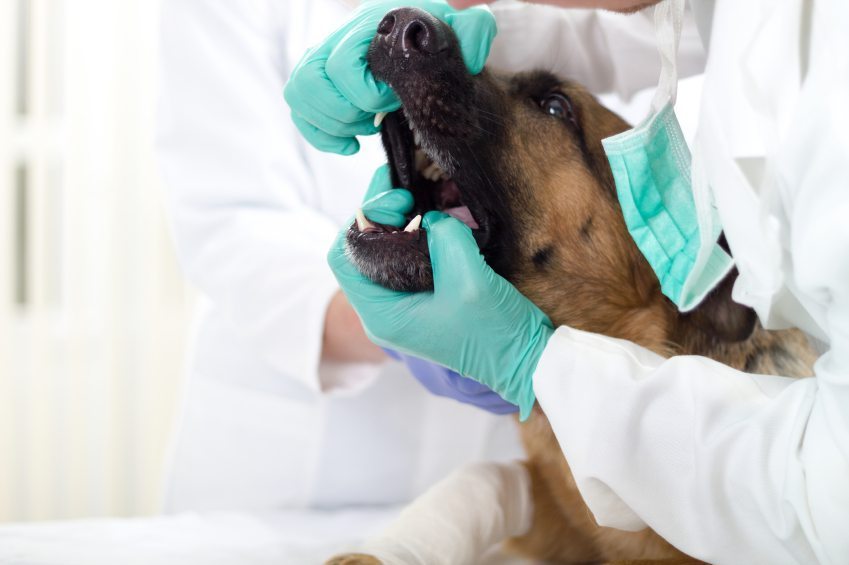If you’ve ever experienced periodontal disease in either yourself or a loved one, you know how painful it can be. This is when your gums are swollen and infected which can create a leakage of bacteria all through your body. Dogs can suffer from the same thing. If you didn’t start routine dental maintenance when they were puppies, then gum disease can creep up on them like a silent killer.
In fact, dog dental disease has been linked to kidney failure in dogs because of the bacteria that traveled from their mouths into their bloodstream and then into other organs. Here’s some information on dental disease in dogs to help you keep your canine’s smile fresh and healthy.
How it Starts
Just like with your teeth, after you have eaten, bacteria starts to form a film on your dog’s teeth called plaque. Plaque reacts this same way in humans as it does in dogs: Your body goes on the alert and sees this substance as foreign.
There are no symptoms of gum disease. One of the best things you can do is start a program of tooth brushing early when they are puppies to get them used to it. You can use a finger brush and special toothpaste formulated for dogs which will keep plaque from building up and causing gum disease.
What to look for
Although dental issues can cause silent diseases, there are some things to look for that will clue you in as to what your dog is going through:
- Bleeding or very red gums
- Bad breath
- Blood in the saliva
- Sneezing or nasal discharge
This last sign might seem like an odd one but what happens with advanced gum disease is that it can destroy the bone between the nasal and oral cavities and create breathing problems for your dog.
A Progressive Disease
Gum disease in dogs is progressive and goes through several stages before they are into bone loss. In stage one there is no bone loss, stage two has as much as 25% bone loss, stage three shows up to 50% bone loss and stage four is more than 50% bone loss due to bacteria.
Prevention
As we discussed above, start your dog on a preventive maintenance of tooth brushing at least once a week. This will help prevent plaque buildup on her teeth. You can even brush her teeth once a day if you find that that’s helpful. If your pup does have plaque buildup, talk with your vet and see if you can arrange for her to clean your dog’s teeth. This is a procedure that requires general anesthesia but can help prevent bone loss.
Remember, A dog’s mouth, just like yours, needs to have regular cleaning to stay fresh and bright to avoid dog dental disease! For more health information on dogs, click the links below!
6 Signs Of A Dog Ear Infection
Photo Image: istockphoto.com












